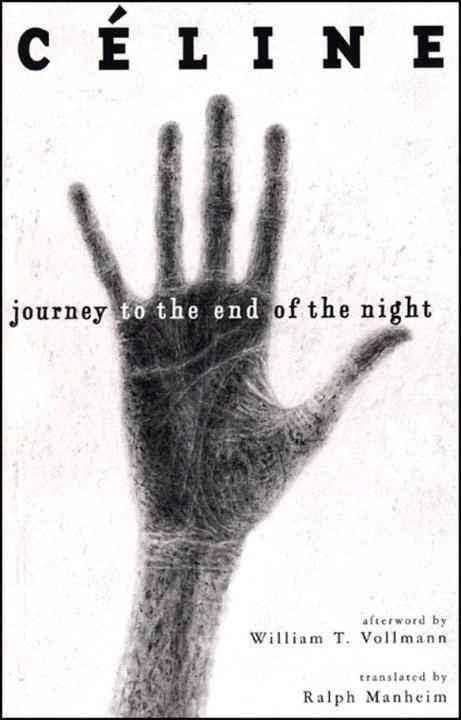8.4 /10 1 Votes
Country France Publication date 1932 | 4.2/5 Goodreads Language French Originally published 1932 Nominations Prix Goncourt | |||||||||||||||||||||||||||||||||
 | ||||||||||||||||||||||||||||||||||
Original title Voyage au bout de la nuit Translators John H. P. Marks, Ralph Manheim Similar Louis-Ferdinand Céline books, World War I books, Other books | ||||||||||||||||||||||||||||||||||
Louis ferdinand c line journey to the end of the night book review
Journey to the End of the Night (Voyage au bout de la nuit, 1932) is the first novel by Louis-Ferdinand Céline. This semi-autobiographical work describes antihero Ferdinand Bardamu.
Contents
- Louis ferdinand c line journey to the end of the night book review
- off the shelf book review louis ferdinand celine journey to the end of the night
- Literary style
- Influence and legacy
- Publication history
- References
Bardamu is involved with World War I, colonial Africa, and post–World War I United States (where he works for the Ford Motor Company), returning in the second half of the work to France, where he becomes a medical doctor and establishes a practice in a poor Paris suburb, the fictional La Garenne-Rancy. The novel also satirizes the medical profession and the vocation of scientific research. The disparate elements of the work are linked together by recurrent encounters with Léon Robinson, a hapless character whose experiences parallel, to some extent, Bardamu's experiences.
Voyage au bout de la nuit is a nihilistic novel of savage, exultant misanthropy, combined, however, with cynical humour. Céline expresses an almost unrelieved pessimism with regard to human nature, human institutions, society, and life in general. Towards the end of the book, the narrator Bardamu, who is working at an insane asylum, remarks:
…I cannot refrain from doubting that there exist any genuine realizations of our deepest character except war and illness, those two infinities of nightmare,
(…je ne peux m'empêcher de mettre en doute qu'il existe d'autres véritables réalisations de nos profonds tempéraments que la guerre et la maladie, ces deux infinis du cauchemar,)
A clue to understanding Céline's Voyage lies in the trauma he suffered during his experience in World War I. This is revealed by a study of biographical and literary research on Céline, histories of the war, diaries of his cavalry regiment, and literature on the trauma of war. Céline's experience of the war leads to "…the obsession, the recurrent anguish, the refusal, the delirium, the violence, the pacifism, the anti-Semitic aberration of the 30’s, [and] his philosophy of life …."
off the shelf book review louis ferdinand celine journey to the end of the night
Literary style
Céline's first novel is probably most remarkable for its style. Céline makes extensive use of ellipsis and hyperbole. His writing has the flow of natural speech patterns and uses the vernacular, while also employing more erudite elements. This has influenced French literature considerably. The novel enjoyed popular success and a fair amount of critical acclaim when it was published in October 1932. Albert Thibaudet, perhaps the greatest of the entre-deux-guerres critics, said that in January 1933 it was still a common topic of conversation at dinner parties in Paris.
Influence and legacy
Paolo Sorrentino's 2013 film The Great Beauty (La grande bellezza) opens with a quote from Journey to the End of the Night. The film concludes with a visual of the last paragraph of the book, passing under bridges, arches, and locks along the city's river.
Will Self has written that Journey to the End of the Night "is the novel, perhaps more than any other, that inspired me to write fiction".
The song "End of the Night" by The Doors references this book, as it had a great influence on the work of Jim Morrison.
Charles Bukowski makes reference to Journey in a number of his novels and short stories, and employs prose techniques borrowed from Céline. Bukowski wrote in Notes of a Dirty Old Man that "Céline was the greatest writer of 2000 years".
Céline's literary style greatly influenced Joseph Heller's Catch-22.
In Jean-Luc Godard's 1965 dystopian science fiction film Alphaville, protagonist Lemmy Caution dismisses a taxi driver's offer of route options to his destination by stating that he is on "a journey to the end of the night". The film depicts the use of poetry as a weapon against a sentient computer system.
Jacques Tardi illustrated the 1988 edition with 130 drawings.
